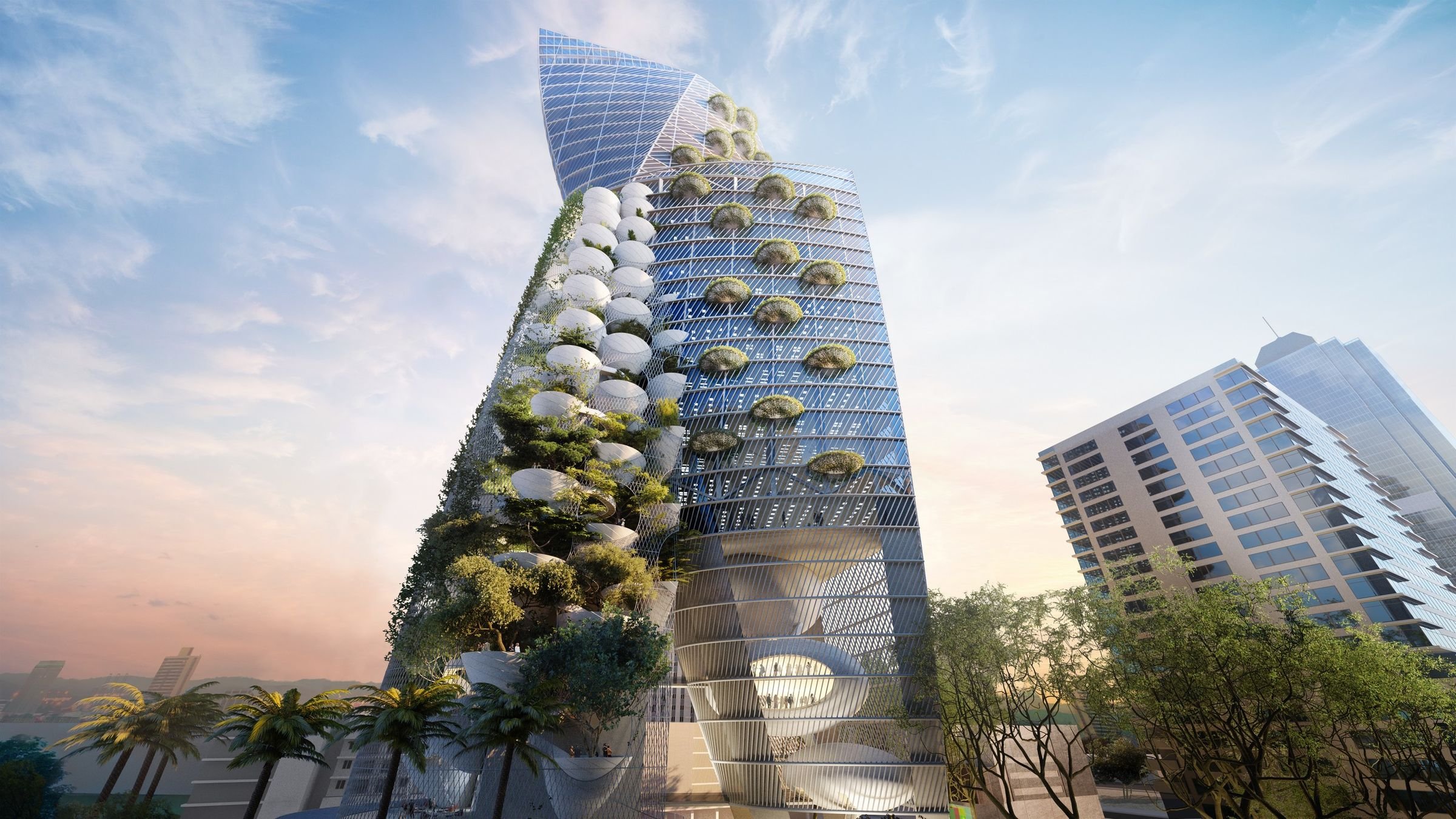
The Zuellig Building, the first platinum LEED building in the Philippines. PHOTO: HPS
Net zero buildings play a vital role in advancing the advocacy for sustainability in the Philippines by showcasing the feasibility and benefits of energy-efficient design, renewable energy integration, and carbon neutrality.
Net zero buildings have emerged as one of the solutions for climate change and environmental challenges. These buildings, also known as zero-energy buildings or carbon-neutral buildings, are designed to generate as much energy as they consume over a given period.
Net zero buildings have gained importance in the Philippines as the country strives to address its energy challenges and combat the impacts of climate change. These buildings, characterized by their innovative design and energy-efficient features, serve as symbols of sustainable development and environmental stewardship.
Arthaland Century Pacific Tower

Arthaland Century Pacific Tower in BGC, Taguig. PHOTO: Primer PH
Arthaland Century Pacific Tower (ACPT) is a 32-story office building located in the heart of Makati City, Philippines. It is the first certified net zero development in the Philippines, meaning that it produces no net emissions of greenhouse gases.
ACPT achieved net zero status through a number of sustainable design and operational measures. In terms of sustainable design, the building was made to be highly energy-efficient, with features such as double-glazed windows, high-efficiency lighting, and a green roof, according to World Green Building Council.
In terms of renewable energy, a portion of the building’s energy needs are met by solar panels installed on the roof. In addition, a number of energy efficiency measures are in place in the building, such as motion sensor lights and occupancy-based HVAC systems, according to World Green Building Council.
When it comes to water conservation measures, a number of water conservation measures are in place in the building, such as low-flow toilets and faucets, and rainwater harvesting.
ACPT’s net-zero status is a significant achievement, and it sets a new standard for sustainable office buildings in the Philippines. The building’s success demonstrates that it is possible to design and operate high-rise buildings in a way that is both sustainable and profitable.
BCDA Iconic Building

BCDA Iconic Building to be completed in 2023 in BGC, Taguig. PHOTO: archello
The BCDA Iconic Building is a new office building in Bonifacio Global City, Taguig City, Philippines. It is designed to be a net zero building, meaning that it produces no net emissions of greenhouse gases.
The building was designed by CAZA Architects and is scheduled to be completed in 2024. It will be a 25-story building with a total floor area of 100,000 square meters, according to Arch20. The building will achieve net zero status through a number of sustainable design and operational measures.
The building was designed to be highly energy-efficient, with features such as double-glazed windows, and high-efficiency lighting, according to Arch20. It will be equipped with solar panels to generate electricity. Moreover, the building will implement a number of energy efficiency measures, such as motion sensor lights and occupancy-based HVAC systems. The building will also implement a number of water conservation measures, such as rainwater harvesting.
The demand for net zero buildings is growing, as more and more businesses and governments are looking to reduce their environmental impact. In the Philippines, the government has set a target of achieving net zero emissions by 2050. This target will require a significant increase in the number of net zero buildings.
Zuellig Building

Zuelling Building in Makati. PHOTO: ArchDaily
The Zuellig Building is a 33-story office tower in Makati City, Philippines. It is the first Platinum level LEED Core and Shell building in the country, and is one of the most sustainable office buildings in Asia, according to Lamudi.
The Zuellig Building is designed to minimize its environmental impact. It features a number of green building technologies, such as a double-paned low-emissivity curtain wall that reduces solar heat gain and energy loss and a sensor-controlled lighting system that turns off lights when they are not needed, according to Inquirer.net.
In addition, it has an efficient HVAC system that uses recycled water and a greywater recycling system that captures and reuses water from sinks and showers. The building has a rainwater collection system that collects rainwater for use in irrigation.
Moreover, the Zuellig Building is designed to promote occupant health and well-being as it features a number of qualities that improve indoor air quality, such as high-quality air filtration systems, natural ventilation, daylighting, and views of the outdoors, according to Inquirer.net.
The Zuellig Building is a model for sustainable office design. It demonstrates that it is possible to build high-performance buildings that are also good for the environment.
Importance of Net Zero Building in the Advocacy for Sustainability
Net zero buildings are a key part of the solution to climate change. They can help us to reduce our reliance on fossil fuels, and create a more sustainable future. The demand for net zero buildings is growing. More and more businesses are recognizing the benefits of these buildings, and are making a commitment to sustainability.
BillionBricks has also started to introduce net zero homes and communities in the Philippines. These net zero homes and communities utilize renewable energy sources and sustainable construction materials to reduce environmental impact. To know more about our BillionBricks and our net-zero homes and communities, please email us at hello@billionbricks.org
Sources
-
Lamudi. (2021). 17 Highly Sustainable Office Buildings in the Philippines. Retrieved from https://www.lamudi.com.ph/journal/12-sustainable-offices-philippines/
-
Pinoy Builders. (2021). Building ‘green’: Sustainable buildings in the Philippines. Retrieved from https://pinoybuilders.ph/building-green-sustainable-buildings-in-the-philippines/
-
Property Asia (2018). 9 LEED Certified Buildings In The Philippines. Retrieved from https://www.propertyasia.ph/newsroom/2018/08/07/9-leed-certified-buildings-philippines/
-
World Green Building Council. (n.d.). Arthaland Century Pacific Tower. Retrieved from https://worldgbc.org/case_study/arthaland-century-pacific-tower/
-
Arch20. (n.d.). BCDA Iconic Building. Retrieved from https://www.arch2o.com/bcda-iconic-building-caza/
-
Inquirer.net. (2013). Zuellig Building’s new technologies and newest tenant. Retrieved from https://business.inquirer.net/152557/zuellig-buildings-new-technologies-and-newest-tenant




